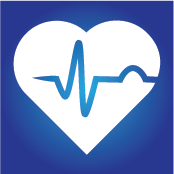The authors of this study set out to review existing research to create evidence-based exercise guidelines for improving cardiorespiratory health and cardiometabolic health which are specifically designed for those with SCI. Continue reading
Blog Archives: Research Studies
New research could lead to changes in SCI recovery guidelines
| 1 commentSpinal cord perfusion pressure is the difference between mean arterial pressure and cerebrospinal fluid pressure. Continue reading
Wheeling strategies in manual wheelchair users and able-bodied individuals
| 0 commentsWhat is biomechanics? Biomechanics is the science of movement of a living body, including how muscles, bones, tendons, and ligaments work together to produce movement. Continue reading

Cardiovascular health during rehabilitation
| 0 commentsCardiovascular disease is more prevalent within the SCI community than in the general population.The reason for this is because of the extensive amount of bed rest following traumatic spinal cord injury, which results in a low level of physical activity and cardiovascular fitness. Continue reading
Wheelchair angles and heart health
| 1 commentCan the angle of your wheelchair affect your heart health? Have you ever wondered whether different body positions affect the way your heart pumps blood to the rest of your body? Continue reading
How bowel, bladder, sexual dysfunction can affect health
| 1 commentWhat is bowel, bladder and sexual dysfunction? Persons with a spinal cord injury (SCI) can experience changes to their bladder, bowel, and sexual function secondary to the spinal cord damage. Problems can occur due to a lack of voluntary control over urination and defecation, possibly leading to complications like urinary tract infections. Continue reading
How is neuropathic pain studied?
| 3 commentsWhat is neuropathic pain? Pain typically occurs when damage to the body creates a signal that is relayed to the brain by the nervous system. Neuropathic pain, on the other hand, is pain resulting from damage directly to the nervous system. Continue reading
Arterial stiffness after SCI and interventions
| 1 commentWhat is “central arterial stiffness,” and why is it important? Arterial stiffness is the consequence of many modifiable and non-modifiable factors that include age, gender, physical activity levels, family history, diet, body composition, and blood pressure level. An increase in arterial stiffness is directly correlated with cardiovascular (CV) disease and the hardening and loss of elasticity of the arteries in the heart and brain. Continue reading
A phone-monitored upper limb home exercise program for post-stroke individuals
| 0 commentsPost stroke recovery– The ideal rehabilitation program: Up to 75% of stroke survivors have upper limb impairments that make everyday tasks like grasping a cup or utensil difficult. Many of these individuals become reluctant to use their affected limb in daily activities (called “learned non-use”). This can be detrimental to their long-term health, since reduced arm use has been associated with consequences such as decreased strength and bone density. Continue reading
The costs of autonomic dysreflexia for people with SCI
| 0 commentsWhat is Autonomic Dysreflexia (AD)? AD is a life-threatening condition that can develop as a common secondary condition for people with spinal cord injuries. It is triggered by an overstimulation of the autonomic nervous system—the system responsible for all unconscious bodily functions such as the heart control and breathing. Continue reading

